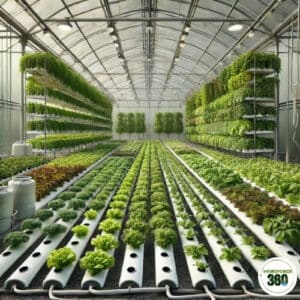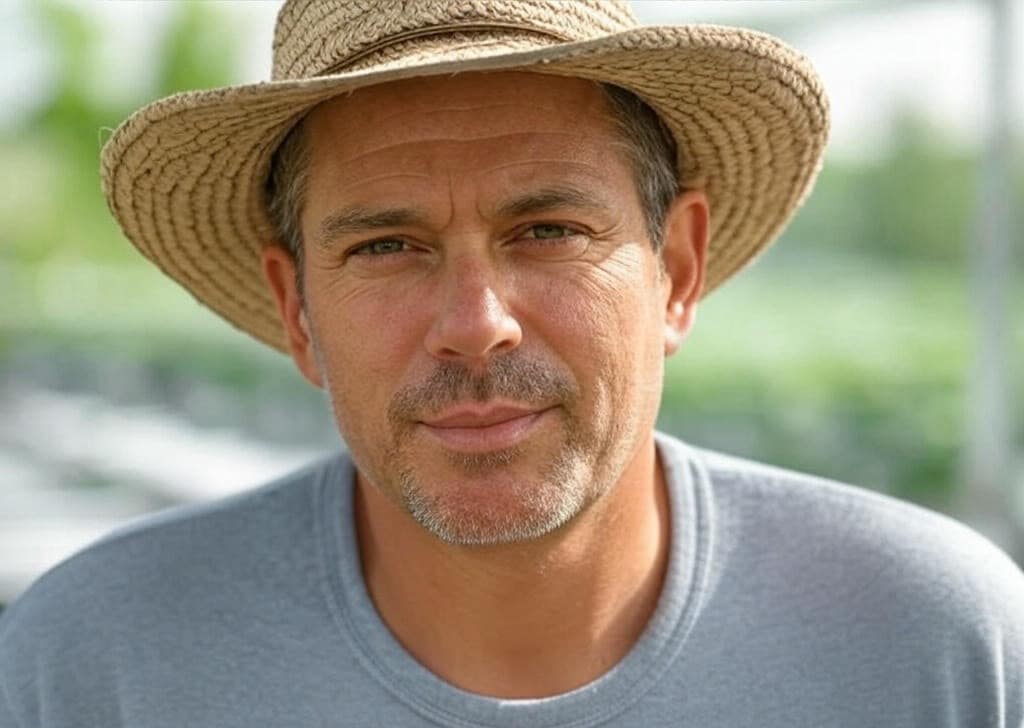Inside the Hydroponic Greenhouse: Smart Farming
Table Of Content
There was a time when greenhouses were simply glass structures that extended the growing season by protecting plants from the weather. But now, with hydroponic technology entering the scene, greenhouses have become something else entirely — smarter, more efficient, and capable of producing higher yields all year round. A hydroponic greenhouse isn’t just a growing space; it’s a system designed for precision, sustainability, and productivity.
Growers today are discovering that combining hydroponics with a greenhouse setup offers some of the best advantages in modern agriculture.

What Is a Hydroponic Greenhouse?
A hydroponic greenhouse is exactly what it sounds like—a greenhouse designed specifically to house hydroponic growing systems instead of traditional soil beds. In this setup, plants grow without soil, receiving their nutrients through water-based solutions. The greenhouse structure provides protection from outdoor weather conditions while allowing full control over the growing environment inside.
Temperature, humidity, light exposure, and airflow are all factors that can be optimized in a hydroponic greenhouse. This makes it possible to grow crops that would otherwise struggle in outdoor conditions, not only extending the growing season but in many cases eliminating it entirely.
Why Hydroponic Greenhouses Are So Powerful
There are many reasons why growers turn to hydroponic greenhouses, especially those looking for higher yields and reliable harvests.
First, water efficiency is a major benefit. Hydroponic systems recycle nutrient solutions, using up to 90% less water than traditional soil-based growing. In areas with water restrictions or unpredictable rainfall, this makes a huge difference.
Second, pest control is dramatically easier. Without soil, many common pests simply aren’t present. The enclosed greenhouse environment adds another layer of protection, allowing for cleaner and healthier plants with reduced pesticide use.
Third, space is optimized in a hydroponic greenhouse. Vertical growing systems, hanging setups, and stackable designs allow growers to maximize every inch of their structure.
The Best Hydroponic Systems to Use Inside a Greenhouse
Different hydroponic systems work better depending on your greenhouse layout, crop choices, and growing goals.
Deep Water Culture (DWC) systems are popular for leafy greens and herbs in greenhouse settings. They are simple to maintain and provide excellent growth rates in a controlled environment.
Nutrient Film Technique (NFT) systems fit perfectly in vertical setups, allowing long channels of plants to thrive in limited floor space.
Ebb and Flow (Flood and Drain) systems offer flexibility for larger crops like peppers or tomatoes, allowing the grower to manage nutrient delivery and oxygenation in cycles.
Aeroponics is sometimes used in advanced greenhouse setups, particularly where water conservation and rapid growth are priorities.
Key Considerations When Building a Hydroponic Greenhouse
Designing a hydroponic greenhouse is not just about putting up a structure and adding plants. Several critical factors need attention to ensure success.
Lighting is essential, especially in regions with low sunlight during certain months. Supplementing with LED grow lights ensures plants receive enough light for photosynthesis.
Temperature control helps maintain optimal growth conditions. Automated fans, heaters, or even cooling systems may be required depending on your climate.
Humidity management prevents fungal issues and supports healthy plant development. Monitoring and adjusting humidity levels is easier in a greenhouse but still requires attention.
Airflow ensures that fresh oxygen circulates around the plants, reducing disease risk and strengthening plant structure.
Advantages of Hydroponic Greenhouses For Year-Round Growing
Perhaps the biggest advantage of a hydroponic greenhouse is the ability to grow fresh produce all year round. Seasonal limitations disappear when growers can control the environment so completely.
This makes hydroponic greenhouses ideal not only for home growers looking to produce their own food but also for commercial operations seeking a consistent supply.
Additionally, growing in a greenhouse with hydroponics allows for faster crop turnover. Plants grow quicker because they receive exactly what they need, when they need it, without competition from weeds or fluctuating soil conditions.
Cost and Investment: What to Expect
Building a hydroponic greenhouse can range from a simple backyard project to a significant commercial investment. Costs depend heavily on size, system complexity, and the type of crops being grown.
DIY greenhouses combined with Kratky or DWC systems offer a budget-friendly entry point. Larger, fully automated greenhouses with aeroponic setups and climate control systems will naturally require more upfront investment.
Hydroponic Greenhouse Is the Future of Smart Growing
Combining hydroponics with greenhouse design is one of the smartest moves any modern grower can make. The ability to control every aspect of the growing environment leads to healthier plants, faster harvests, and a cleaner growing experience overall.
Whether you’re dreaming of fresh herbs year-round or building a commercial setup designed for maximum efficiency, a hydroponic greenhouse offers endless possibilities.
A hydroponic greenhouse isn’t just about growing plants. It’s about growing better.
FAQs
What is a hydroponic greenhouse?
It’s a greenhouse designed specifically for growing plants in hydroponic systems, allowing full control over the environment while eliminating soil.
Are hydroponic greenhouses expensive to build?
Costs vary widely depending on size and complexity. DIY setups can be affordable, while commercial systems require more investment.
Can I grow food year-round in a hydroponic greenhouse?
Yes, controlling temperature, light, and nutrients allows for consistent year-round growing regardless of outdoor conditions.
What is the best hydroponic system for greenhouses?
Deep Water Culture, Nutrient Film Technique, and Ebb and Flow systems are all excellent choices, depending on the plants and space available.
Table Of Content
